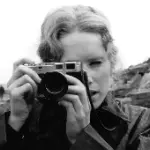
The most disappointing part of Avatar: The Way of Water is not the script, but the core.
The most powerful thing about Avatar thirteen years ago was the construction of a sense of civilizational identity. It successfully made us identify with the civilization of the Na'vi that they were willing to turn their guns on their fellow man in order to defend it.
Specifically, it shows in two dimensions.
The first is the establishment of private emotions, that is, the love between humans and avatars.
The biggest difficulty is not the script, but how to show their romance visually. In other words, what the director wants to do is not to make the hero fall in love with the heroine, but to make every audience fall in love with the Na'vi. He wants to bypass visual differences and finally achieve emotional resonance. This requires the support of technology.
The most successful part of Avatar is that through characters design and motion capture, coupled with 3D rendering, it finally created romantic scenes that is different from human beings, but the romance can still be perceived.

In order to get best effect, Cameron chose to shoot "Avatar: The Way of Water" in real water, and the crew completed huge technical and physical challenges.
The second is the presentation of the Na’vi civilization. It is not limited to the display of spectacle, but also shapes the humanistic environment. On Pandora, people have completely different views on life and death, and they also have tolerance beyond species.
From this perspective, what Avatar actually tells is a heterogeneous story.
The protagonist, Jack, is a disabled soldier who has a very unsatisfactory life on earth. When he comes to Pandora and becomes an Avatar, he is finally accepted by the Na'vi and becomes one of them (even a leader). From the perspectives of Jack, Avatar is actually about how the aliens on this earth find their belongings. And this kind of tolerance to heterogeneity is the characteristic in the Na'vi civilization.
It is also very interesting to notice this assimilation process. You will find that it is not the "Na'vi" who finally accept Jack, but "Pandora". In other words, there is no master like human beings who can decide everything. On the contrary, they must learn to coexist with everything here.

Jack once became a member of Pandora, standing on the opposite side of human beings in the war.
It should be said that the most amazing part of Avatar is to show us another possibility of human civilization. It shows us how the Na'vi people eat, sleep, and have sex, how to hold up the soul of a compatriot... This kind of animistic community awareness makes people free from loneliness.
Therefore, Avatar finally created a dream with technology.

But this kind of experience has completely disappeared in Avatar: The Way of Water.
It becomes an oversimplified adventure story, creating a reason for the protagonists to leave the jungle and go to the ocean tribe, thereby showing the marine ecology of Pandora.
The problem is that the film shows limited knowledge about marine ecology. It only describes the external differences—differences in environment, color and biological forms—but it fails to show differences at the personality level of civilizations as that in the first episode.
And it can be said that the villain in the film is rather the protagonist Jack himself than the humans. Jack, a cowardice father, has finally brought disaster to his family.
Avatar: The Way of Water is actually a very clichéd story about fighting against patriarchy. The most twisted part of this kind of story is to describe a perpetrator (father) as a savior, and finally use the sentence "family is all that mattered" to write off all his sins. It is becoming more and more difficult to accept such a story when it happens on humans, let alone on Na’vi people.
In Avatar: The Way of Water, we just witnessed that the Na'vi people are becoming more and more familiar, that is to say, similar to humans. So that the technological upgrade of the film only makes us feel tired. The technological upgrade in the film only makes people feel tired. After all, technology is only a tool, and expressing emotion is the goal. What technology is worth pursuing is that it can make the impossible becomes possible, thereby expanding the depth of emotion.
For example, use the sinking of a magnificent ship to cheer for romantic relationship; make repeated time leap to prove that human beings are still a species worth saving; To fabricate a civilization to reflect human arrogance... These are the places where technology can be used.
Unfortunately, Cameron has achieved the goal, but not for this time.










































Share your thoughts!
Be the first to start the conversation.